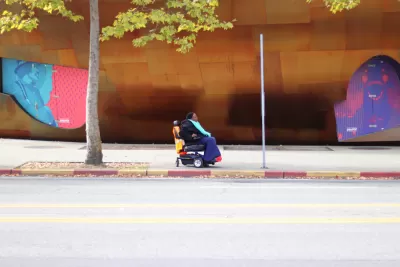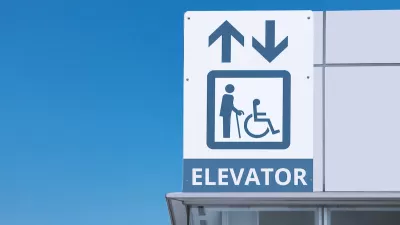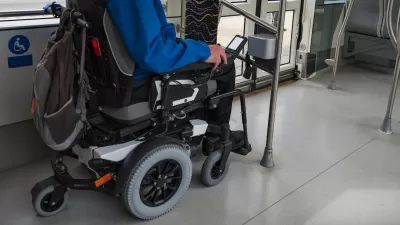Public transit agencies around the country have made a lot of progress in providing access for people with disabilities, but there is a lot of work left to ensure to the full freedoms of mobility.

The letter of the Americans With Disabilities Act law isn't always enough to appreciate the necessity of mobility and equal access for people with disabilities, say advocates as the historic law's anniversary approaches.
Matt Alderton writes for The Washington Post:
President George H.W. Bush signed the ADA into law on July 26, 1990. As the legislation’s 30th birthday nears, advocates say the increased mobility of Americans with disabilities is evidence that it was the right thing to do. That gaps persist, however, is a reminder that work remains.
The scale of the need is greater than many able bodied people recognize. "Nearly 25 million people have a travel-limiting disability, according to the Bureau of Transportation Statistics, which says 1 percent of all Americans — about 3.6 million people — are homebound because of a disability."
The article focuses mostly on the access to transportation required in the law, but those interested in more reading should also see in-depth coverage of the Curb-Cut Effect—a documented effect of multiple benefits from ADA improvements in the public realm.
FULL STORY: Nearly 30 years after the ADA, the nation’s transit agencies report successes and shortfalls

Planetizen Federal Action Tracker
A weekly monitor of how Trump’s orders and actions are impacting planners and planning in America.

San Francisco's School District Spent $105M To Build Affordable Housing for Teachers — And That's Just the Beginning
SFUSD joins a growing list of school districts using their land holdings to address housing affordability challenges faced by their own employees.

The Tiny, Adorable $7,000 Car Turning Japan Onto EVs
The single seat Mibot charges from a regular plug as quickly as an iPad, and is about half the price of an average EV.

With Protected Lanes, 460% More People Commute by Bike
For those needing more ammo, more data proving what we already knew is here.

In More Metros Than You’d Think, Suburbs are Now More Expensive Than the City
If you're moving to the burbs to save on square footage, data shows you should think again.

The States Losing Rural Delivery Rooms at an Alarming Pace
In some states, as few as 9% of rural hospitals still deliver babies. As a result, rising pre-term births, no adequate pre-term care and "harrowing" close calls are a growing reality.
Urban Design for Planners 1: Software Tools
This six-course series explores essential urban design concepts using open source software and equips planners with the tools they need to participate fully in the urban design process.
Planning for Universal Design
Learn the tools for implementing Universal Design in planning regulations.
Smith Gee Studio
City of Charlotte
City of Camden Redevelopment Agency
City of Astoria
Transportation Research & Education Center (TREC) at Portland State University
US High Speed Rail Association
City of Camden Redevelopment Agency
Municipality of Princeton (NJ)





























